AN-583
One Technology Way • P. O. Box 9106 • Norwood, MA 02062-9106, U.S.A. • Tel: 781.329.4700 • Fax: 781.461.3113 • www.analog.com
Evaluating the SSM2167 Low Voltage Microphone Preamplifier with Variable
Compression and Noise Gating
by Shawn Scarlett
Rev. D | Page 1 of 4
THE SSM2167 EVALUATION BOARD
The SSM2167 evaluation board is a convenient means to
evaluate and understand the operation of the SSM2167. This
application note provides a basic explanation of how the board
is set up, and how to use it to evaluate the SSM2167. This
document is only a supplement and refers to figures contained
in the SSM2167 data sheet.
This application note also contains the schematics and layout for
the SSM2167 evaluation board to allow easy modification and
experimentation. Applications support is available from Analog
Devices, Inc., online at www.analog.com or in the United States
at 1-800-ANALOGD or 1-800-262-5643.
BASIC CONNECTIONS AND SETUP
The SSM2167 board features simple, easy-to-use connections
that allow for a broad range of experimentation. The evaluation
board is available only with the SSM2167-1.
Power and Ground
The SSM2167 is optimized for operation at 3 V; however, it can
operate from a wide range of supplies. Refer to the SSM2167 data
sheet for the maximum limits. The SSM2167 evaluation board
can be connected to a bench power supply or two AA batteries.
Power leads must be soldered into place at JP3. Alternatively, a
header jack can be soldered to the SSM2167 board to allow easy
disconnection. The power and ground connections are critical
to the performance of the SSM2167 board; therefore, ensure
proper connection.
Shutdown Connection
The low current shutdown current connection is located at the
lower part of the SSM2167 evaluation board along with the
power and ground. The SSM2167 board has a pull-up resistor
installed so that if no connection is made at that point, the device
operates in active mode. To enable the shutdown feature, connect
SD
to ground. To perform an in-depth analysis on the shutdown
current, remove the pull-up resistor (R5). Do not leave the
shutdown pin floating. When R5 is removed, connect
SD
directly to the supply or ground.
Signal Connections, Input, and Output
Signal sources can be connected to the SSM2167 evaluation
board with standard 3.5 mm jacks or leads, which can be
soldered directly to the SSM2167 evaluation board at JP1 and
JP2. The SSM2167 evaluation board uses 3.5 mm stereo sockets
with the signal on the tip and the sleeve connected to the board
ground; the ring is left floating. At both jumper connections, a
ground point is available to prevent noise.
The input jack is configured for maximum versatility. By
default, it is designed for use with an electret microphone or
input source. It can be changed easily to accommodate dynamic
microphones.
ELECTRET MICROPHONES
The SSM2167 evaluation board is configured with a 2.2 kΩ
resistor (R4) to the supply for use as a biasing resistor. It connects
directly to the signal path so that both the jack and the jumper
(JP2) can be used as input connections. Standard computer electret
microphones can be used without modification because the ring
and tip are connected internally in the microphone. The input jack
and JP2 are decoupled from the input pin via a 0.1 µF capacitor (C1).
DYNAMIC MICROPHONES
When the SSM2167 evaluation board is used with a dynamic or
self-powered microphone, remove R4.
OUTPUT SIGNAL
The output jack is decoupled from the circuit via a 10 µF capacitor
(C2). The connection can be made at either JP1 or the standard
3.5 mm jack, with the signal connection to the tip of the plug.
For listening tests, the output signal can be connected directly
from the 3.5 mm jack to an RCA input on a normal audio
amplifier using a standard stereo adapter cable. In this case, use
the left (white or black) RCA connection because it corresponds
with the tip of the 3.5 mm jack. The output of the SSM2167 is
not sufficient to drive headphones or other output transducers
without external amplification.
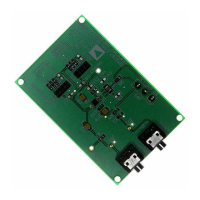

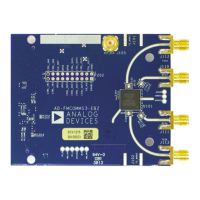
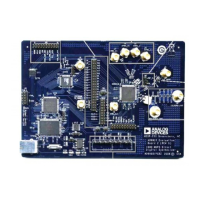
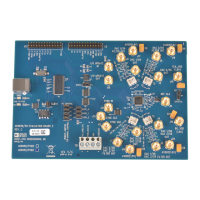
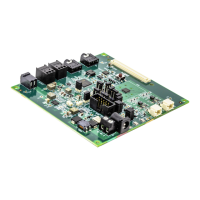
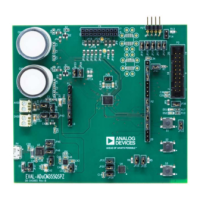

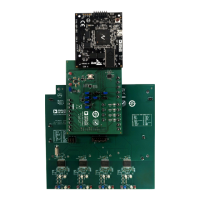

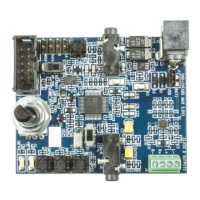

